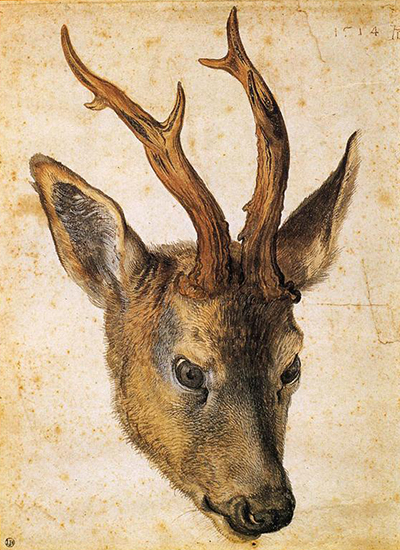Durer painted Head of a Stag in 1503 and was influenced by the work of Italian artists such as Giovanni Bellini and Andrea Mantegna. The painting is one of a number of watercolours, featuring wildlife and the natural world as the subject, which were created by Durer at the beginning of the 16th Century.
Albrecht Durer is best known for his religious and portrait paintings featuring oil on canvas. However, he had a great interest in the natural world and created a number of watercolour on paper artworks which, perhaps, were intended as models for later works. Other works featuring watercolour on paper, created by Durer around the same time as Head of a Stag, include Young Hare in 1502 and Great Piece of Turf in 1503. Art experts suggest that Durer was able to achieve a level of skill in his watercolour painting which provide his work with an almost photographic quality, unsurpassed by his peers. A number of artists of the time tried to emulate Durer's nature watercolours, however, none of them were able to match his level of proficiency. Experts suggest that there are around a dozen copies, by Durer's contemporaries, still in existence.
Jacopo de' Barbari visited Durer in Nuremburg in 1500. It was during this time that, due to his visitors great expertise in the field, Durer became interested in the concepts of 'anatomy', 'perspective' and 'proportion'. Having learned much from the Venetian artist, Durer continued to investigate and develop his skills in using these elements. This process led to a number of watercolours, featuring natural life, during the early years of the 16th Century. It is considered that Durer made a huge number of sketches and preliminary artworks, using drawing and watercolours, which he intended to us as the basis of further works in the future.
Durer's watercolour can be seen in the Musée Bonnat-Helleu which is located in the French city of Bayonne, close to the Spanish border in the French Basque country. The museum is situated on Rue Jacques Laffitte. Before visiting it should be stated that the museum has been closed for some time, it has been suggested that the exhibits will be available once more, towards the end of 2021.




